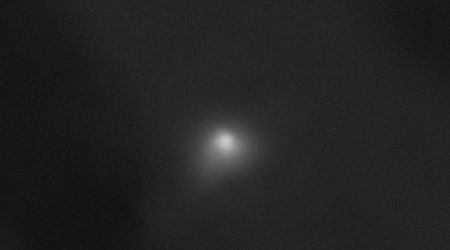Ancient interstellar comet 3I/ATLAS may be billions of years older than our solar system

A recently identified interstellar object, designated 3I/ATLAS, is generating significant scientific buzz, with researchers suggesting it could be the oldest comet ever observed, potentially predating our solar system by billions of years. This "water ice-rich" celestial body marks only the third confirmed object from beyond our solar system to visit our cosmic neighborhood and the first believed to originate from a distinct region of the Milky Way, according to The Royal Astronomical Society.

University of Oxford astronomer Mathew Hopkins, while speaking at the Royal Astronomical Society's National Astronomy Meeting 2025, shared that orbit3I/ATLAS could be over seven billion years old, making it a potential unparalleled interstellar discovery. Unlike its predecessors, 1I/'Oumuamua (2017) and 2I/Borisov (2019), 3I/ATLAS exhibits a steep trajectory through the galaxy, implying that it originated from the Milky Way's 'thick disk.' It is the region where a group of ancient stars orbits above and below the plane where the Sun and most stars reside.

"All non-interstellar comets, such as Halley's comet, formed within our solar system, so they are up to 4.5 billion years old," Hopkins stated. "But interstellar visitors have the potential to be far older, and of those known about so far, our statistical method suggests that 3I/ATLAS is very likely to be the oldest comet we have ever seen." The ATLAS Survey telescope in Chile first detected the object on July 1, 2025, when it was approximately 670 million kilometers from the Sun. Hopkins' research, based on a model developed during his doctoral studies, posits that 3I/ATLAS's formation around an old, thick-disk star implies a composition rich in water ice.

"This is an object from a part of the galaxy we've never seen up close before," remarked Professor Chris Lintott, a co-author of the study. "We think there's a two-thirds chance this comet is older than the solar system, and that it's been drifting through interstellar space ever since." Early observations suggest 3I/ATLAS is already exhibiting cometary activity, including outgassing, and may be larger than its interstellar predecessors. As it nears the Sun, solar heating is expected to intensify this activity, creating a visible coma and tail. This activity, if confirmed, could significantly impact predictions for future discoveries by telescopes like the new Vera C. Rubin Observatory and offer insights into the role of ancient interstellar comets in fostering star and planet formation across the galaxy.

Co-author Dr Michele Bannister of the University of Canterbury in New Zealand stated, "We're in an exciting time: 3I is already showing signs of activity. The gases that may be seen in the future as 3I is heated by the Sun will test our model." She further added, "Some of the biggest telescopes in the world are already observing this new interstellar object – one of them may be able to find out!" as mentioned by the outlet.
The detection of 3I/ATLAS came as a surprise to the research team, who were preparing for the Vera C.Rubin Observatory's survey operations, which their model predicts will uncover between 5 and 50 interstellar objects. "The discovery of 3I suggests that prospects for Rubin may now be more optimistic; we may find about 50 objects, of which some would be similar in size to 3I. This week's news, especially just after the Rubin First Look images, makes the upcoming start of observations all the more exciting," noted co-researcher Dr Rosemary Dorsey of the University of Helsinki. Hopkins and his co-author have published their analysis as a preprint on arXiv, featuring their Ōtautahi–Oxford Model, which represents the first real-time application of predictive modeling to an interstellar comet. For skywatchers, 3I/ATLAS is anticipated to be visible through reasonably sized amateur telescopes in late 2025 and early 2026.









